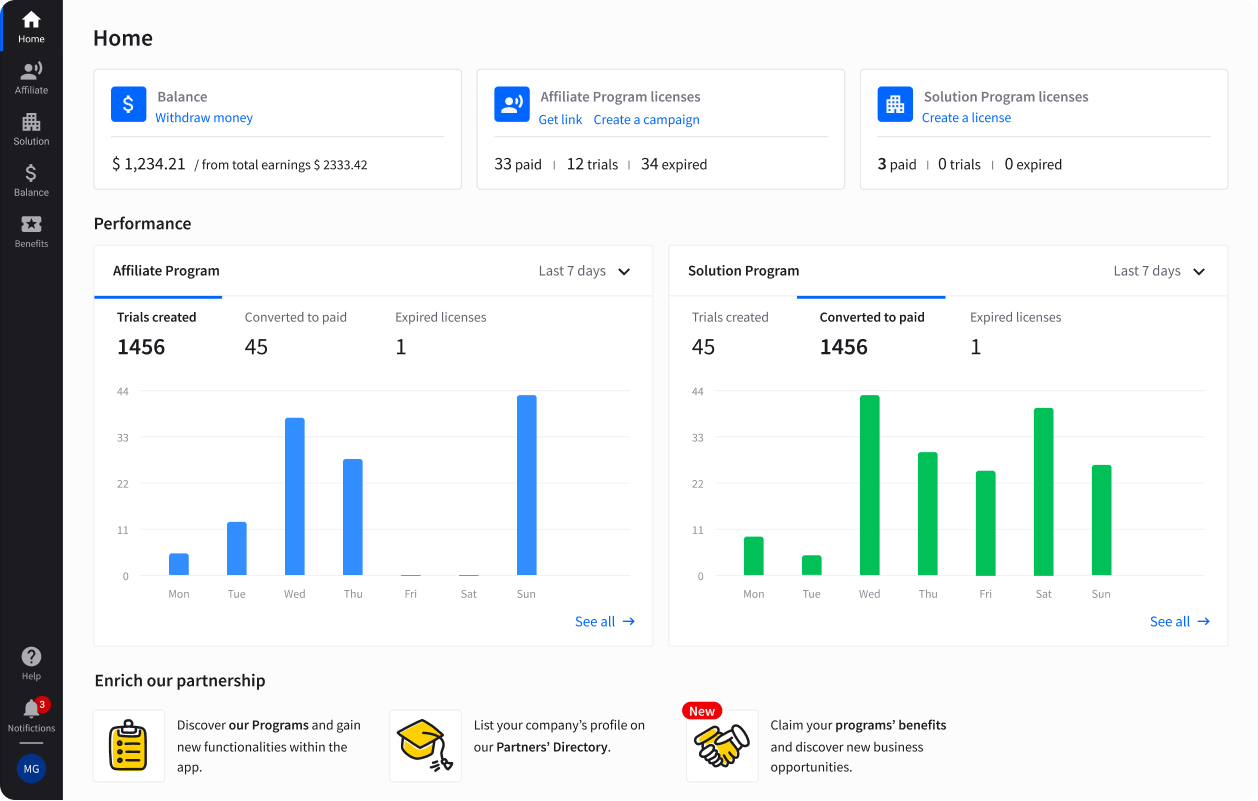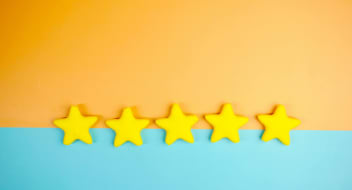Showing top 0 results 0 results found
Showing top 0 results 0 results found

What you'll learn from this article:
- What are agencies and consulting firms
- Fundamental differences between agencies and consulting firms
- Engagement strategies for agencies and consultancies
Key findings:
Difference between agency and a consultancy
An agency focuses on execution — delivering services like marketing, implementation, or creative work to help clients adopt and use SaaS products. A consultancy, on the other hand, provides strategic guidance, advising clients on technology decisions, transformation initiatives, and long-term planning.
Engagement approach for agencies and consulting firms
Engage agencies with scalable enablement, co-marketing support, and clear incentives tied to adoption and usage. For consulting firms, focus on strategic co-selling, joint solution development, and executive-level collaboration to influence larger, long-term deals.

As SaaS companies scale, partner programs become a powerful way to drive adoption, reach new markets, and deliver customer value. But not all partners operate the same, and two of the most common, agencies and consultancies, play very different roles.
While both can influence how customers buy and implement SaaS products, agencies tend to focus on execution and marketing, whereas consultancies specialize in strategy and transformation. Understanding these differences is essential for building effective partner tiers, incentives, and marketing processes plans.
This article breaks down how agencies and consultancies contribute to SaaS partner programs — and how to work with each to maximize impact and competitive advantage.
What are marketing agencies and consulting firms
Understanding the fundamental nature of agencies and consultancies is key to designing an effective SaaS partner program.
| Aspect | Marketing agency | Consultancy |
|---|---|---|
| Primary role | Marketing, implementation, and demand generation | Strategy, digital transformation, solution design |
| Client focus | SMBs and mid-market | Mid-market and enterprise |
| Engagement model | Short-term, campaign- or project-based | Long-term, advisory-led engagements |
| SaaS value add | Drives user adoption and activation | Influences vendor selection and architecture |
| Common metrics | Campaign ROI, MQLs, CAC | Revenue influence, NPS, and deal velocity |
| Go-to-market fit | Ideal for PLG, self-serve, and onboarding | Ideal for co-sell, enterprise sales, and integrations |
| Incentive needs | Co-marketing, margin share, and training access | Co-selling support, solution accelerators, and joint GTM planning |
Agencies
Marketing agencies are service firms that help clients implement, market, or operate digital solutions. In SaaS, this often means:
- Running advertising services like paid media and growth campaigns.
- Managing marketing strategy with content, SEO, or customer onboarding flows.
- Professional services like setting up and integrating SaaS tools (like CRM or marketing automation).
Many agencies tend to work on shorter timelines, deliver measurable outcomes (like MQLs or conversions), and operate on a project or retainer basis. They are ideal partners for driving activation, adoption, and user success at scale, especially in SMB and mid-market segments.
📚Read our guide to digital marketing for agencies and learn how to earn!
Consultancies
Consulting firms, on the other hand, specialize in helping organizations solve complex problems, make strategic decisions, and lead change in business performance. In the SaaS world, this includes:
- Advising on technology stacks during digital transformation.
- Leading vendor selection processes to meet all business goals.
- Managing cost-effective, large-scale implementations or process redesign.
They operate on a big-picture view and work with executives and decision-makers, engage in longer-term relationships, and often influence multi-product deals. Consultancies are most valuable when selling expertise to mid-market or enterprise accounts, where strategic alignment and trust are key.
Fundamental differences between agencies and consulting firms
In SaaS partner programs, agencies and consultancies operate under different assumptions, priorities, and engagement styles. Recognizing these differences helps SaaS companies create tiered programs, tailored incentives, and enablement resources that align with each partner’s business model.
Business focus
- Agencies are execution-focused. Their team helps customers launch, grow, or optimize their use of a SaaS product, often delivering campaigns across various channels, integrations, or managed services.
- Consultancies are strategy-focused. Their consulting teams help clients decide what to buy, why, and how to structure it within their organization, providing a more holistic approach. SaaS is often a means to a broader end: digital transformation, cost reduction, or operational efficiency.
Sales motion and buying influence
- Agencies influence adoption after the sale or during bottom-up sales (PLG motion). They're often brought in by new customers or mid-level teams.
- Consultancies influence before the sale, developing and shaping an enterprise's creative and purchasing decisions. They’re involved in RFPs, architecture planning, or M&A-related tech shifts.
💡 This means consultancies are critical in influencing larger deal flow, while agencies are working to drive usage, retention, and upsell within accounts.
Customer relationship model
- Agencies have hands-on, high-touch relationships. Their internal teams own tactical execution and often act as extensions of the client’s marketing or operations team.
- Consultancies have high-trust, strategic relationships with executives. Marketing consultants' external support on pain points may lead to sweeping internal changes, including procurement or re-platforming.
Partner program priorities
Your partner program must recognize these differences and structure engagement accordingly:
| Dimension | Agency | Consultancy |
|---|---|---|
| Enablement needs | Platform training, campaign templates, APIs | Industry positioning, solution design, and integrations |
| Incentives | Co-marketing, lead pass, usage-based rewards | Co-sell support, influence credit, and deal registration |
| Support resources | Onboarding toolkits, sandbox environments | Solution blueprints, executive marketing plans briefings |
| Partner tiers | Volume-based (projects, MRR, certifications) | Value-based (influence, deal size, strategic reach) |
Go-to-market fit
- Agencies thrive in self-serve and PLG environments, helping SaaS companies activate and expand quickly across smaller accounts with an in-house team.
- Consultancies shine in enterprise-focused GTM, being a strategic solution to land complex deals, accelerate customer acquisition, and orchestrate long-term adoption.
Join our Partner Program!
Looking for a business partner in sales and online communication? You’re in the right place!

Engagement strategies for agencies vs consultancies
To build a thriving SaaS partner ecosystem, it's not enough to sign partners — you must engage them in ways that align with how they deliver value. Agencies vs consultancies differ in what they need, expect, and respond to. A one-size-fits-all model can result in industry misalignment, low activation, or missed revenue.
| Goal | Agency approach | Consultancy approach |
|---|---|---|
| Scale product usage | Train and certify quickly | Create a reusable solution IP |
| Drive net-new business | Co-marketing and lead-sharing | Joint account planning and co-selling |
| Retain and grow accounts | Provide upsell triggers and renewal playbooks | Integrate SaaS into broader transformation goals |
Scale, enable, and co-market with agencies
Most agencies' expertise is typically resource-constrained and client-service-driven. They want tools, visibility, and lead opportunities that help them scale their offerings in your particular area.
Key tactics:
- Self-serve partner portals: Offer quick access to playbooks, campaign kits, onboarding tools, and sandboxes.
- Co-marketing campaigns: Provide MDF (market development funds), shared case studies, or joint webinars to generate leads in similar services.
- Certifications and badging: Help many businesses stand out in a crowded market with easy-to-achieve credentials tied to real outcomes and current challenges.
- Referral and revenue share models: Keep economics simple and transparent — reward for tangible results like MRR influence or successful implementation.
Engagement best practices:
- Offer lightweight onboarding with clear “quick win” paths.
- Celebrate early success (for instance, via a “Partner Spotlight”).
- Regularly share new product features that they can monetize.
Collaborate, co-sell, and strategize with consulting firms
Consultancies care about strategic alignment and customer outcomes. They want to be seen as trusted advisors and expect to partner at a business level, not just a product level.
Key tactics:
- Co-sell enablement: Assign partner consultants and sales overlays to pursue joint opportunities with consulting partners.
- Joint value propositions: Create tailored public relations solution briefs and go-to-market messaging that align your platform with their advisory focus.
- Early access and product influence: Involve them in roadmap discussions or beta programs to give them a stake in your product evolution.
- Solution packaging: Help them create reusable solutions or templates they can use to lead.
Engagement best practices:
- Build account-level collaboration: map named accounts together and plan co-sell motions.
- Host executive briefings and roundtables.
- Reward influence as well as deal closure.
Conclusion
Agencies' and consultancies' expertise both play essential — but fundamentally different — roles in a successful SaaS partner ecosystem. Agencies help develop and scale adoption through tactical execution and customer-facing projects, while consultancies develop long-term strategy and influence enterprise decision-making.
By recognizing these differences, SaaS companies can build smarter partner programs that tailor enablement, incentives, and advertising to fit each partner type. The result? Stronger partnerships, better-aligned value propositions, and faster, more sustainable growth.
Whether you're launching your first partner program or refining a mature ecosystem, designing with partner type in mind isn’t optional — it’s strategic.


